National Debt by Country: The Top IOU Nations
Last Updated: October 31, 2021
Debt is a serious thing.
But how do you measure it?
Besides the national debt statistics, there is another figure that is probably a better indicator of how much a specific country is in debt. It is the figure that indicates debt as a percentage of GDP.
Wait.
What is GDP?
The gross domestic product (GDP) is an economic indicator of the overall health of the economy of a country. This percentage can give us some insight as to whether the indebted country is able to pay out the outstanding debt.
Because countries with large total debt can have strong economies to handle it, we’ll use this ratio when looking at national debt by country in our ranking.
Ready?
Steady.
Go!
Top 20 Countries with the Highest Debt to GDP ratio
Below you can find our list of countries ranked by public debt as a percentage of GDP.
1. Venezuela – 304.125%
(Source: IMF)
The data available from 2020 estimates the national debt of this South American country at $160 billion. This puts Venezuela solidly in the lead when it comes to the countries with the highest debt.
US sanctions implemented by the Trump government only worsened the situation. Venezuela’s main export is oil, though their debt is more than seven times bigger than the amount of money received from oil production and exports.
The majority of Venezuela’s debt is owned by international bondholders, with Russia and China owning the second largest part.
2. Japan – 256.49%
(Source: IMF)
Japan is the country with the second highest national debt to GDP ratio. The national debt is more than two and a half times higher than the annual gross domestic product. The IMF estimates its debt at $8.679 trillion. Japan’s national debt is largely owned domestically, with the majority being held by the Bank of Japan.
Japan has had a rough history with debt. Namely, the post-World War II ratio exceeded the country’s GDP more than two times. It was the result of financing the costly war with government bonds. The government dealt with the debt by introducing war indemnity taxes and printing out more money.
The situation improved in the following years. However, it all came to an end in the 1990s — also known as Japan’s lost decade. It is no wonder that Japan is among the most indebted countries, with the stock market crash and the financial crisis in the 1990s.
3. Sudan – 211.656%
(Source: World Population Review)
Sudan ranks third on our list of the countries with the most debt. That’s not due to the dollar amount owed but due to the country’s inability to pay its debts. In the 1970s, banks loaned Sudan large amounts of money as the country was quickly becoming a major oil exporter.
However, in the 1980s, Sudan wasn’t able to meet payments. The IMF stepped in with further loans, worsening Sudan’s debt in the long run. The country defaulted in 1984 and the foreign debt remains. In 2005, South Sudan seceded, leaving the Republic of Sudan with a lot of debt and little oil.
Sudan’s national debt currently stands at $56.2 billion, mostly owed to the IMF, the World Bank, and western governments.
Fortunately, Sudan has been approved for debt relief by the IMF and can expect to clear around 90% of its debt in the upcoming period.
4. Greece – 210.093%
(Source: IMF)
Greece is fourth in the list of countries by national debt when taking into account the debt to GDP ratio.
So what happened? How did Greece end up in this mess?
Well, it all started when Greece joined the eurozone. Initially, Greece didn’t meet certain criteria to join. The country submitted fake reports on its budget deficit, which they subsequently admitted. As a result, the country faced a financial crisis in 2008, and the economic situation hasn’t improved since.
The European Union feared the implications this would have on the eurozone, so they have loaned Greece approximately €320 billion. So now Greece owes a significant amount of money to EU banks, governments, funds, investors, etc.
According to The Public Debt Management Agency, Greece’s country debt amounted to €387.3 billion in July 2021. That’s approximately $450 billion.
5. Eritrea – 175.575%
(Source: IMF)
With a national debt to GDP ratio of around 175%, Eritrea is one of the countries with the most debt worldwide. Besides this, Eritrea is also considered to be one of the most impoverished countries — more than 50% of the population lives below the national poverty line.
Eritrea’s poor economy can be attributed to the conflict with Ethiopia, which lowered the GDP rate. The fiscal deficits and inflation have led to a high amount of national debt — estimated to be almost $4 billion — that is not sustainable.
6. Suriname – 157.396%
(Source: IMF)
With an estimated debt of $1,341 billion, Suriname’s debt may not seem high. In fact, it may not seem like it even belongs on a list of countries with the most debt. However, since the country’s GDP is fairly low, that amounts to a significant problem. Suriname used to be a Dutch colony, and it used to rely on the Netherlands for financial aid. That aid dried up after the relations between the two countries deteriorated. Suriname’s economy has been in decline ever since, and around 70% of people live below the poverty line.
7. Italy – 157.133%
(Source: IMF)
If we rank European sovereign debts by country, Italy is second only to Greece. Some agencies estimate that the debt will reach $3.6 billion by 2026. This is the highest amount of debt that Italy has had since World War II. Italy’s economic growth isn’t fast enough to pull the country out of the crisis.
It all started with the oil crisis and the inflation in the 1980s. The national debt has been growing ever since, and it now exceeds $3.3 trillion. Most of Italy’s country debt is held by banks, investment funds, and the Bank of Italy. It is estimated that only $100 billion is owned by Italian households.
8. Lebanon – 154.364%
(Source: IMF)
When comparing countries by debt to GDP, Lebanon’s situation seems dire. The country is spiraling into growing amounts of debt. It is now forced to dip in its foreign exchange reserves. It all started after the civil war in the 1990s, which is to blame for Lebanon’s high public debt.
A good part of Lebanon’s GDP is dependent on remittances from migrant oil workers in the Gulf. During these past years, with the decrease in oil prices, the amount of remittances has lowered. The country’s economy was also not able to deal with the Syrian refugees, estimated to be more than one million. This strained the public sector further.
And while its debt as a percentage of GDP is not as high as for some countries on this list, Lebanon is barely able to pay out the high interest on the debt, let alone a significant amount of the national debt. The debt now exceeds $90 billion.
9. Barbados – 143.003%
(Source: IMF)
When looking at the amount of national debt by country, Barbados doesn’t seem to be indebted too much, with a debt total of just under $7 billion. However, that amount represents a high percentage of the country’s GDP.
The already high debt to GDP ratio was further increased after the 2008 recession as the country relies on tourism. However, there is some hope that the public debt of Barbados will decrease. The country entered an extended fund facility arrangement with the International Monetary Fund which would help restore debt sustainability.
10. The Maldives – 139.667%
(Source: IMF)
The Maldives is another country with a “low” total debt but high debt to GDP ratio. With $5.37 billion in total debt and low GDP fueled by the looming recession and mounting debt to China, the situation doesn’t look rosy, and it’s why it’s been included fairly high in this list of countries by debt. India has already stepped in to help alleviate its neighbor’s debt burden by providing $1.4 billion in financial aid.
11. Cabo Verde – 137.574%
(Source: IMF)
While there was some recent economic growth in 2018 and 2019, this was quickly counteracted by the economic downturn during the COVID-19 pandemic. Cape Verde is still among the countries with the largest debt to GDP ratio. This is mainly attributed to the devalued local currency. Another factor is the budget deficit, which stems from the need to finance public enterprises. Out of the total public debt, 72% is external, and the main creditors are multilateral and bilateral lenders.
12. Belize – 134.579%
(Source: IMF)
In recent years, Belize showed signs of growth due to tourism and merchandise sales. However, its dependence on tourism means it was hit hard during the 2020 pandemic. Its GDP shrank by an estimated 14.1% during that year. The debt of countries in the region is also pretty high and while Belize’s per capita GDP is fairly high in comparison, the country is still ridden with a high level of poverty and income disparity.
The outlook does seem to be improving as tourism picks up, and in a few years, Belize may no longer be on this list.
13. United States – 132.839%
(Source: IMF)
The United States of America is considered to have one of the world’s strongest economies, yet that doesn’t negate the fact that it is always included in lists ranking countries by debt. The current debt outstanding is more than $28.42 trillion. The majority of the debt, or 78% to be exact, is owned by the public. The rest is intragovernmental.
The debt to GDP ratio was highest after World War II, though it decreased steadily. However, after the 9/11 attacks, the government increased military spending. This logically caused a high budget deficit. Then along came the Great Recession, which further increased the national debt.
14. Portugal – 131.421%
(Source: IMF)
Portugal is also part of the European countries with the highest debt. The amount is estimated to be around $260 billion.
The country’s public debt rapidly increased after the Great Recession in 2008. The International Monetary Fund and the European Union helped out with the crisis; however, having to repay the debt meant that the GDP decreased. This was due to the fact that the government previously financed the economy with the aim to boost it. The inability to stimulate the economy as well as the high interests only served to increase Portugal’s public debt to GDP ratio.
15. Singapore – 129.540%
(Source: IMF)
When ranking national debt by country, Singapore is always included in the lists. This surprises many, seeing as how Singapore has one of the most developed economies in the world.
So, how can this highly developed economy have a gross public debt exceeding $2.245 trillion? Well, that’s just it — the figure represents the gross national debt. Singapore has exactly zero net public debt. The government doesn’t run a budget deficit; however, all borrowed money is invested. The investments are backed by assets which in turn yield income.
So when ranking debt to GDP by country it is important to note that there are other indicators to consider, which also show the state of the public debt.
16. Bahrain – 129.417%
(Source: IMF)
Bahrain’s country debt is approximately the same amount as the GDP. It is estimated to be almost $36 billion.
Oil and gas are the biggest contributors to Bahrain’s GDP. A drop in oil prices has a direct impact on the budget deficit as well as the public debt. Though recently Bahrain has introduced fiscal reforms which will hopefully help the country rank lower on lists of countries by national debt.
17. Mozambique – 125.309%
(Source: IMF)
Mozambique has previously received help from the International Monetary Fund as part of the Heavily Indebted Poor Countries (HIPC) initiative. However, it was revealed that certain companies took secret loans of close to $2 billion dollars. As the loans were guaranteed by the government, Mozambique has to repay them. What’s more, after the IMF and other donors found out about the extent of public debt Mozambique has, financial support has been stopped.
When looking at the external debt by country ranking, we can see Mozambique owes foreign creditors almost $11 billion, which is around 50% of its total debt of $21.57 billion. This may keep the overall debt to GDP ratio above 100% for the time being. If the debt isn’t restructured and if confidence in investors isn’t restored, the economic growth will slow down.
18. Bhutan – 123.352%
(Source: IMF)
According to Bhutan’s Ministry of Finance, the total public debt outstanding 30th June 2018 was
Nu. 224,909.609 million. In US dollars, that is over $3 billion. Its public debt to GDP ratio remains high and it’s been increasing over the years.
Bhutan’s economy is mainly based on exporting hydropower to India, its main trade partner. Hydropower also accounts for 74.2% of the external debt. And while investing in the hydropower sector has increased Bhutan’s debt, the country expects economic growth from these projects.
An IMF report analyzing the national debt of countries has assessed that Bhutan has a moderate risk of debt distress.
19. Zambia – 118.731%
(Source: IMF)
Despite a large debt of $30.3 billion that exceeds the country’s GDP, Zambia is near the bottom of our list, ranking the public debt by country. The Zambian economy is expected to recover in the upcoming years. The mining, manufacturing, and tourism sectors are allowing the country to bounce back from the recession caused by the impact of the COVID-19 pandemic.
The risks are still present and a second wave of the pandemic could impede the country’s recovery.
20. France – 116.210%
(Source: IMF)
According to data from the Agence France Trésor, the negotiable debt outstanding of France exceeds $2.126 trillion, which makes France one of the EU countries in most debt. The ratio has been steadily increasing and is attributed to high government spending.
The budget deficit will probably increase in the following years due to upcoming tax cuts. Those were announced following the anti-government protests by the yellow vests movements.
It is estimated that 49.8% of France’s public debt is held by non-resident investors, followed by other French investors, and French insurance companies.
Other Important Indicators When Ranking Government Debt By Country
While Japan has the second-highest debt to GDP ratio worldwide, it is also a country with a highly developed economy. So, representing the debt as a percentage of the GDP isn’t the only indicator to be considered when ranking national debt by country. Other important factors include: economic growth, inflation, budget deficit, government spending, and the interest rates on the debt. That means that countries that have the worst public debt are those whose economies cannot meet their financial obligations.

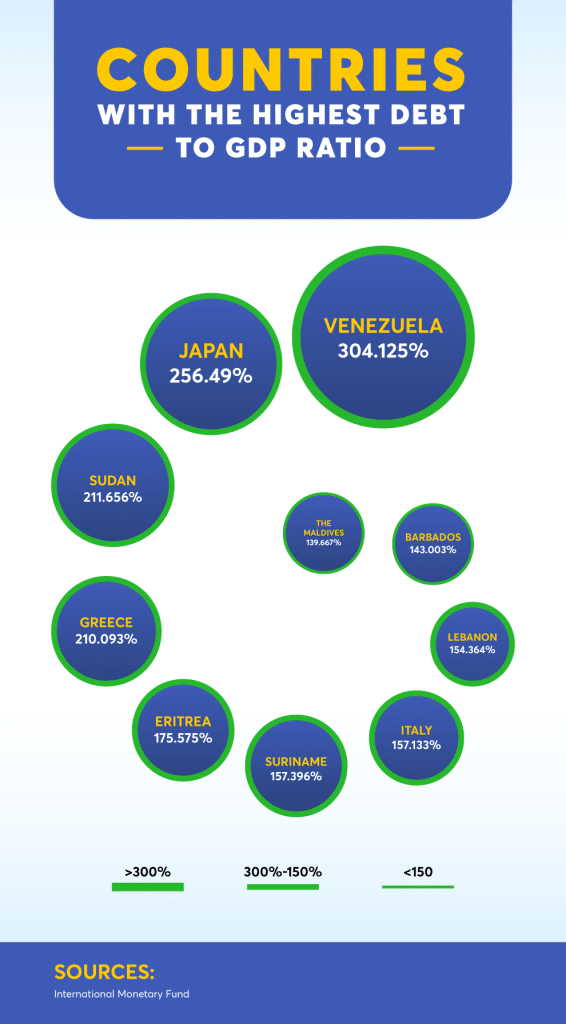
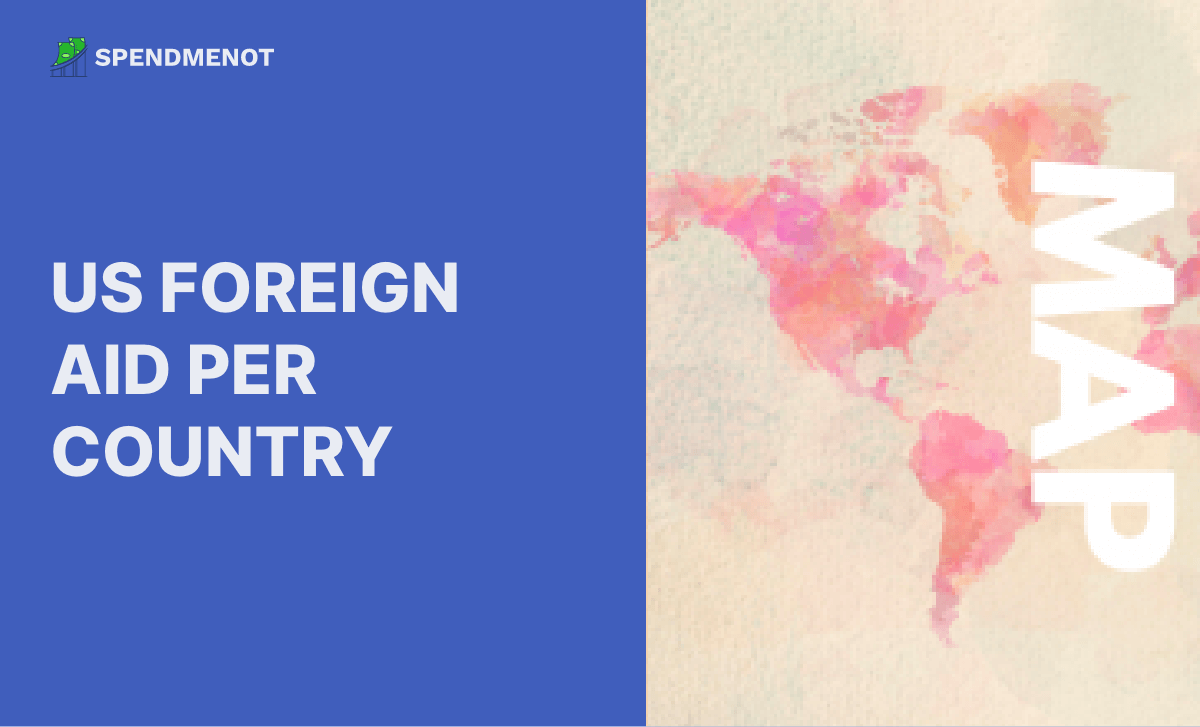
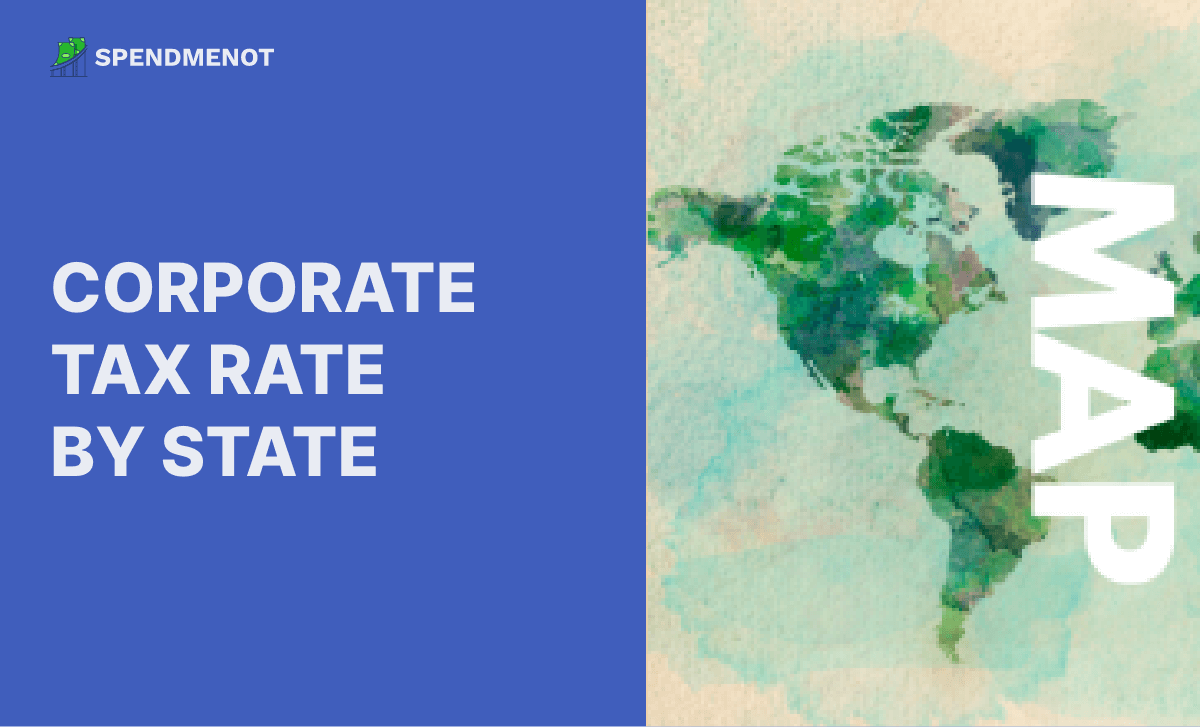

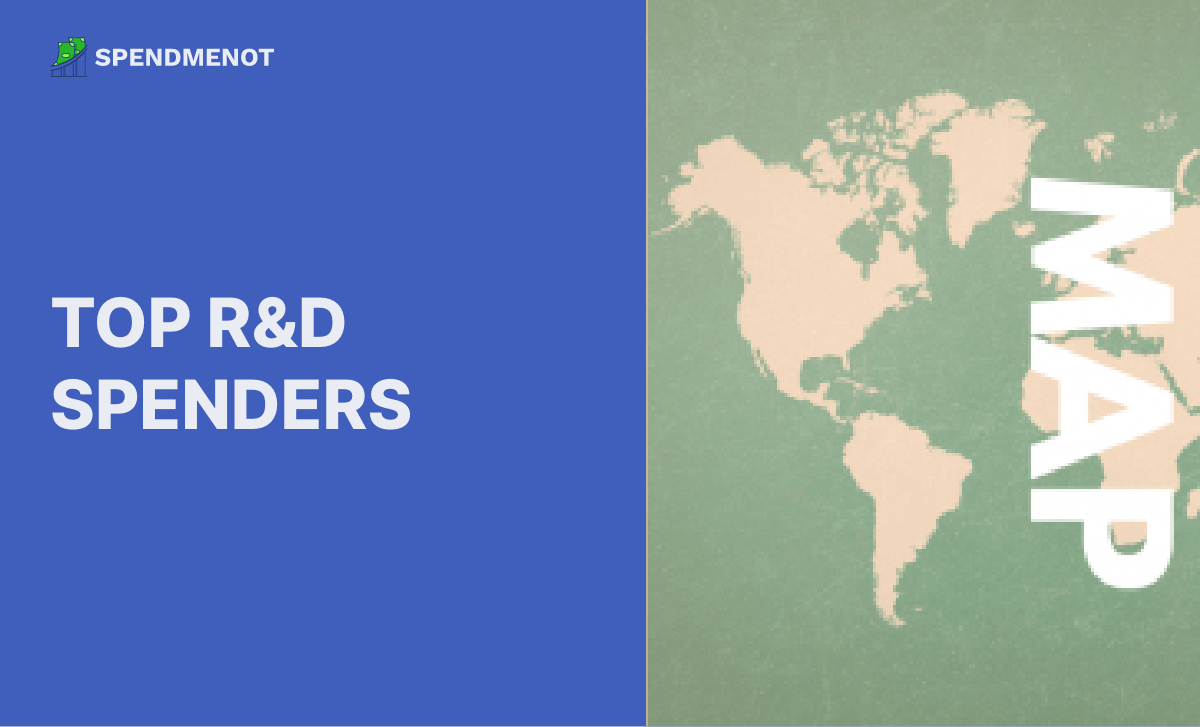





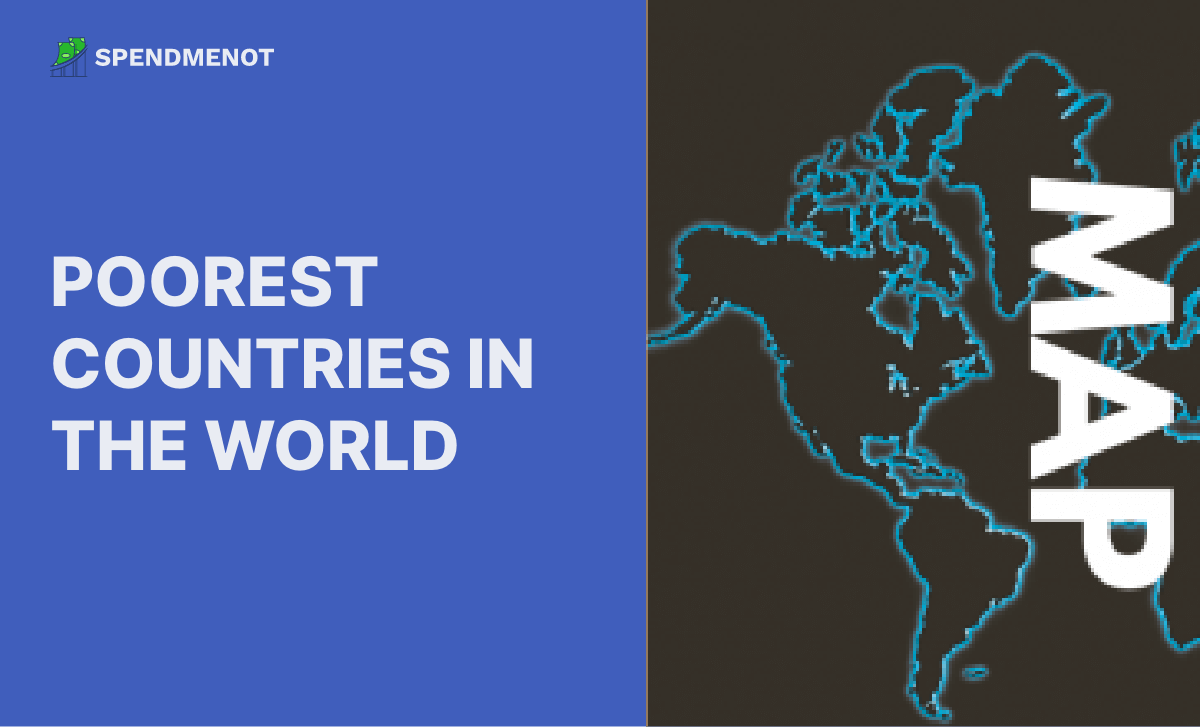
Mansu Horname
September 8, 2022 at 10:58 pm
What about Ghana dept to GDP